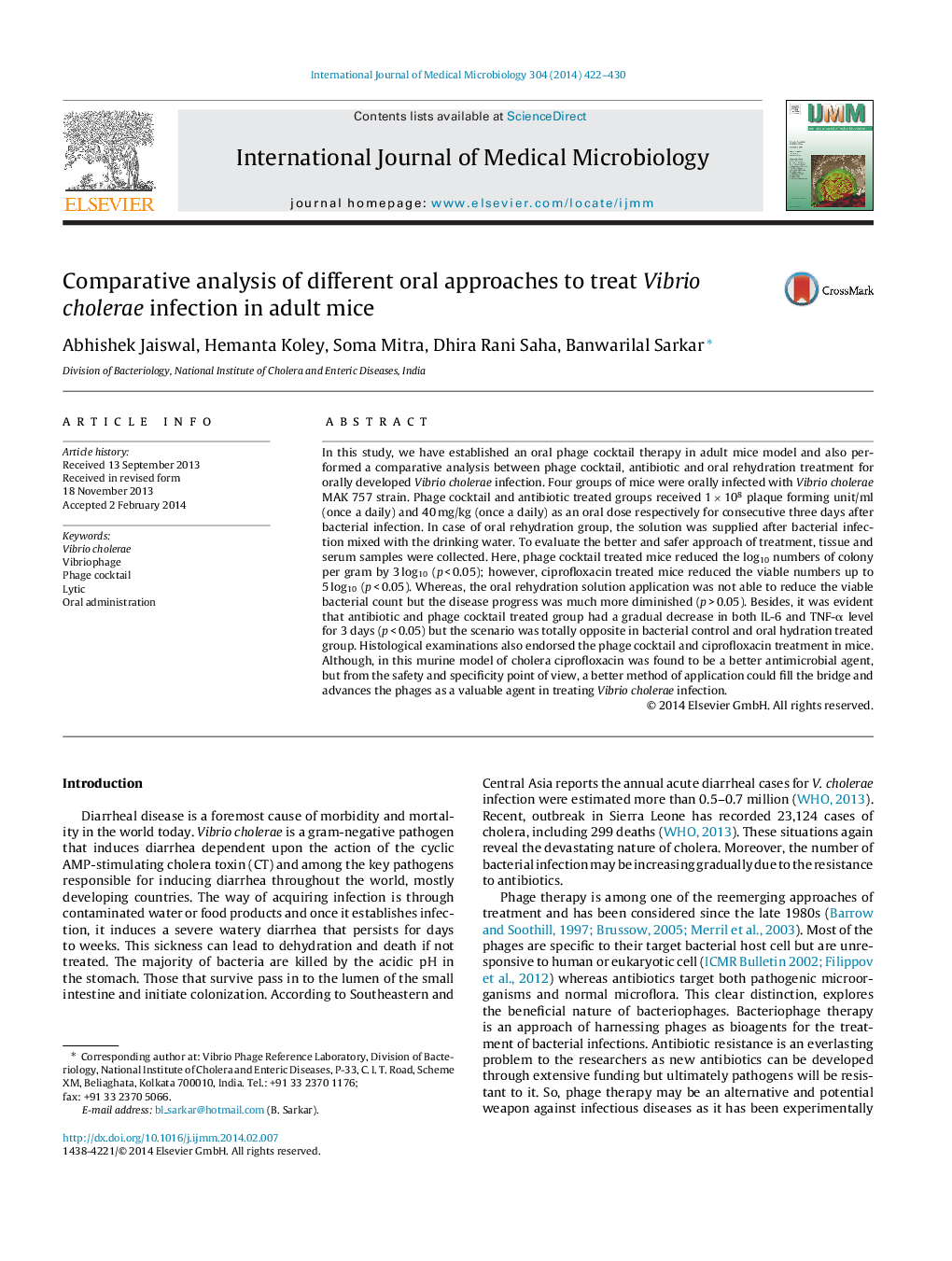| Article ID | Journal | Published Year | Pages | File Type |
|---|---|---|---|---|
| 8385779 | International Journal of Medical Microbiology | 2014 | 9 Pages |
Abstract
In this study, we have established an oral phage cocktail therapy in adult mice model and also performed a comparative analysis between phage cocktail, antibiotic and oral rehydration treatment for orally developed Vibrio cholerae infection. Four groups of mice were orally infected with Vibrio cholerae MAK 757 strain. Phage cocktail and antibiotic treated groups received 1 Ã 108 plaque forming unit/ml (once a daily) and 40 mg/kg (once a daily) as an oral dose respectively for consecutive three days after bacterial infection. In case of oral rehydration group, the solution was supplied after bacterial infection mixed with the drinking water. To evaluate the better and safer approach of treatment, tissue and serum samples were collected. Here, phage cocktail treated mice reduced the log10 numbers of colony per gram by 3 log10 (p < 0.05); however, ciprofloxacin treated mice reduced the viable numbers up to 5 log10 (p < 0.05). Whereas, the oral rehydration solution application was not able to reduce the viable bacterial count but the disease progress was much more diminished (p > 0.05). Besides, it was evident that antibiotic and phage cocktail treated group had a gradual decrease in both IL-6 and TNF-α level for 3 days (p < 0.05) but the scenario was totally opposite in bacterial control and oral hydration treated group. Histological examinations also endorsed the phage cocktail and ciprofloxacin treatment in mice. Although, in this murine model of cholera ciprofloxacin was found to be a better antimicrobial agent, but from the safety and specificity point of view, a better method of application could fill the bridge and advances the phages as a valuable agent in treating Vibrio cholerae infection.
Related Topics
Life Sciences
Biochemistry, Genetics and Molecular Biology
Biochemistry, Genetics and Molecular Biology (General)
Authors
Abhishek Jaiswal, Hemanta Koley, Soma Mitra, Dhira Rani Saha, Banwarilal Sarkar,
